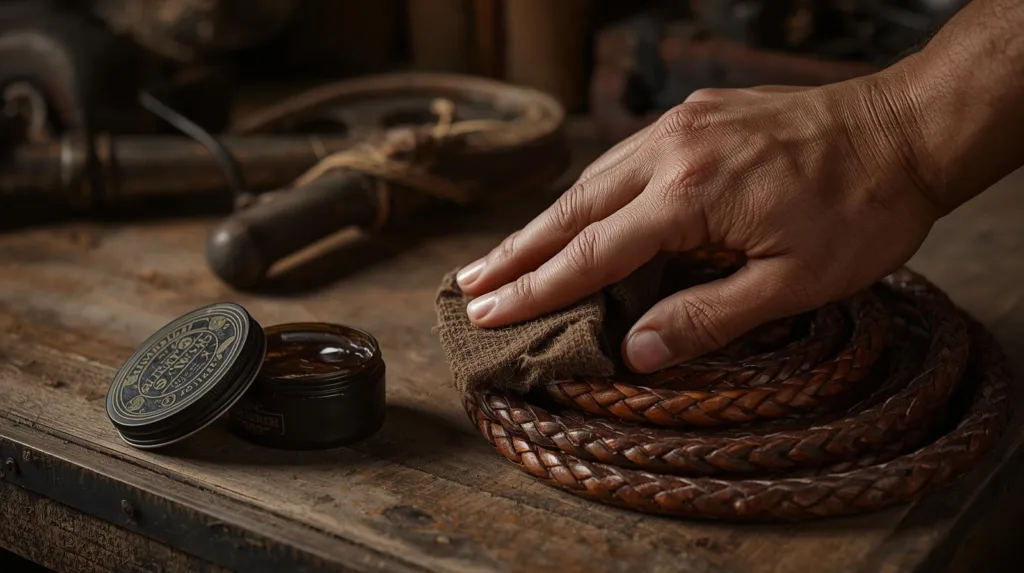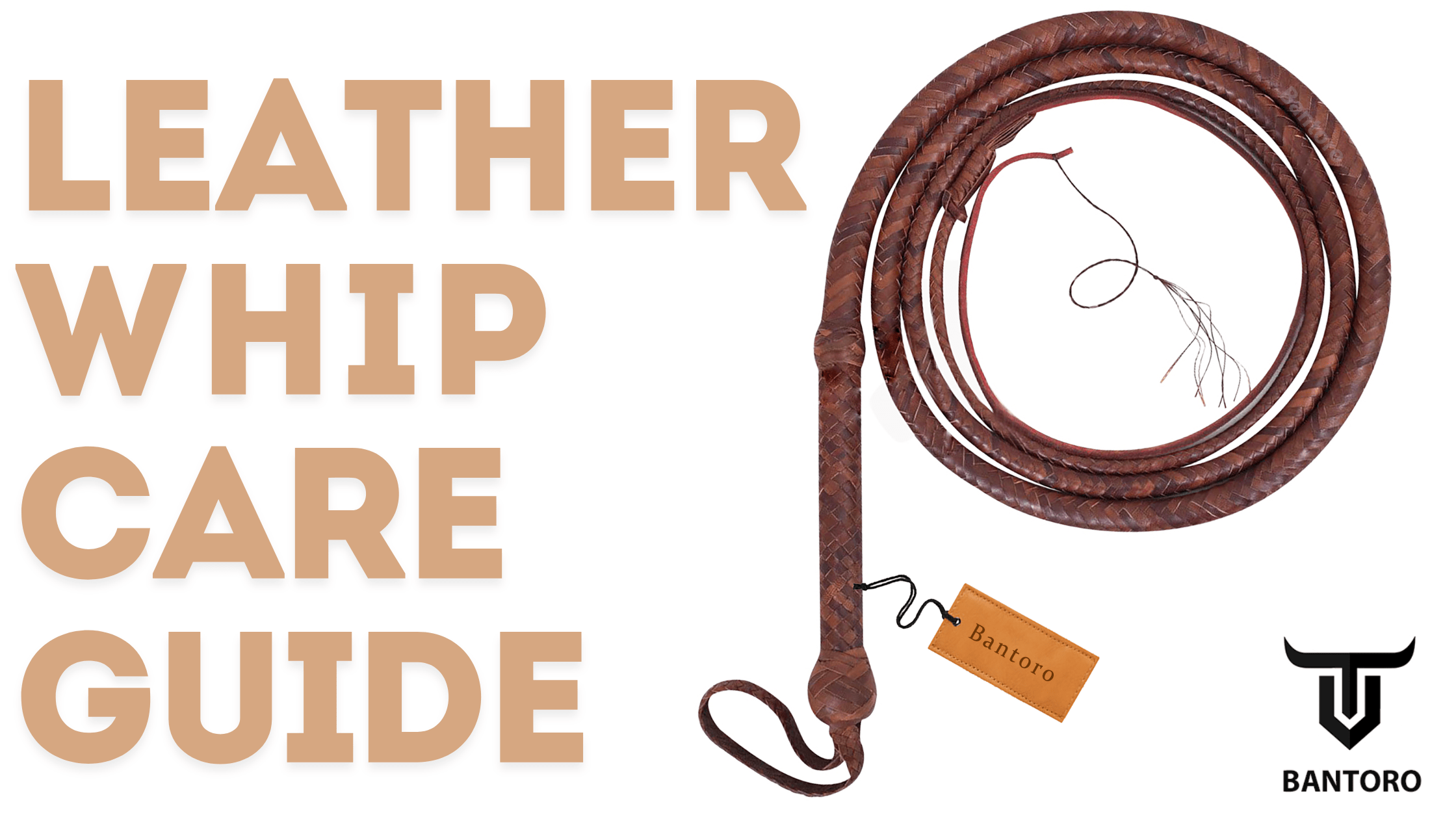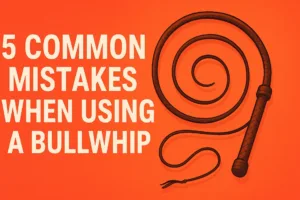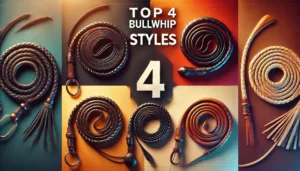Table of Contents
ToggleUltimate Leather Bullwhip Care Guide
Introduction
Owning a leather bullwhip is a commitment to craftsmanship, skill, and tradition. Whether you’re a seasoned whip enthusiast or a beginner, proper care is essential to preserve the integrity and performance of your whip. This comprehensive whip care guide from Bantoro Limited will provide you with detailed steps on how to maintain your leather bullwhip for a lifetime of use.
Why Leather bullwhip Care guide is Crucial
Leather is a natural material that, like human skin, requires regular maintenance to stay supple, strong, and free from cracks. Without care, leather will dry out, become brittle, and degrade over time. With proper care, however, a high-quality leather bullwhip can last for decades, offering years of reliable service and enjoyment.
Bullwhip Care Essentials: Leather vs. Faux Leather

While synthetic whips are generally low-maintenance, leather whips require a more hands-on approach. Unlike synthetic materials, leather is prone to drying out, cracking, and absorbing dirt or moisture. However, with the right care routine, you can ensure that your whip stays supple, strong, and beautiful for years to come.
Caring for Leather Bullwhips

One of the most debated topics in the whip-cracking community is what products to use on leather whips. Many products claim to nourish leather, but leather is dead skin—it cannot heal or rejuvenate itself. What leather needs most is to be moisturized and kept supple, similar to how we treat dry skin.
Moisturizing Your Leather Whip
Moisturizing is critical for preventing cracks and keeping the leather soft. Most saddle soaps and beeswax-based leather dressings help retain moisture and protect against external elements. Here’s a step-by-step guide to maintaining your whip’s leather:
Clean with Saddle Soap:

- Use saddle soap to clean dirt and debris from your whip. Make a thick, creamy lather and apply it with a soft cloth or sponge.
- For deeper cleaning (if your whip is muddy), use a soft toothbrush to gently scrub away dirt.
- Allow the whip to dry naturally by hanging it in a cool, dry place.
Condition the Leather:

- While the whip is still slightly damp, apply a small amount of beeswax-based leather conditioner. This allows the leather to absorb the moisture and conditioner more effectively.
- Once the whip is dry, wipe off any excess conditioner.
Oil or Dress the Leather:
- Use thicker dressings rather than liquid oils, as they are easier to manage and less likely to over-saturate the leather.
- Dressings with natural oils like beeswax or even beef dripping are often preferred by whip makers. However, some people also use petrochemical-based conditioners like Pecard Leather Conditioner.
- Apply the dressing with your fingers to warm it up, allowing it to penetrate deeper into the leather.
Products to Avoid

Conclusion
Caring for your leather bullwhip involves routine maintenance and a little bit of patience. By following this guide, you can ensure your whip stays in peak condition for years to come. Proper cleaning, conditioning, and storage will prevent premature wear and allow you to enjoy the art of whip-cracking for as long as possible.
For more information on high-quality leather whips or to explore our collection, visit Bantoro.com.- Neatsfoot Oil: Based on David Morgan Whip Guide, do not use neatsfoot oil. This can degrade leather over time and should be avoided.
- Excessive Oils: While oils can soften leather, too much can lead to an oily, sticky whip that’s unpleasant to handle.
Storage Tips

Proper storage is key to maintaining your whip’s shape and function:
- Coil with the Natural Curve: When coiling your whip for storage, always follow its natural curve to avoid stressing the leather. Never force it into a shape that goes against this curve.
- Avoid Excess Heat: Leather, especially waxed whips, should never be stored in areas of excessive heat. High temperatures can cause wax to break down and seep out of the leather. Store your whip in a cool, dry place for optimal longevity.
During Use: How to Avoid Damage
To prolong the life of your whip during use, follow these guidelines:
- No Excessive Bending: Avoid grabbing and excessively bending the whip. Doing so can damage the internal layers of the leather.
- Break-In Period: New leather whips are often stiff. Use the whip normally without forcing it into extreme positions, and over time, it will naturally soften and break in according to your unique style.
- Watch for Knots: Always remove any knots in the fall or cracker as soon as you notice them. If the cracker is beyond untangling, replace it immediately to prevent excessive wear on the fall.
Hand-Plaited Falls and Tails: Special Care Instructions
For whips with hand-plaited falls, such as those made from Dyneema or Dacron, take extra care to avoid striking hard or abrasive surfaces. These materials can be damaged rapidly if used improperly. Plaited falls are also not recommended for routines that involve frequent contact with the ground. Instead, opt for twisted or detachable falls for such purposes.
Cleaning Your Leather Bullwhip

If your whip becomes dirty:
- Use a Lint-Free Cloth: Clean your whip using a slightly damp, lint-free cloth. Gently rub the surface to remove dirt without applying excessive force.
- Detergent for Stubborn Dirt: If the whip is especially dirty, you can use a small amount of mild detergent. However, avoid using abrasive materials, as they can damage the leather.
Bullwhip Cracker Care
The whip cracker is a vital component of your whip, and it will wear out over time:
- Replace When Necessary: Always replace your cracker once it becomes too frayed or damaged. You can order spare crackers with your whip or make your own. You can Buy Replacement Crackers from the Bantoro store :
- Hand-Tapered Crackers: Hand-tapered Dyneema crackers are prone to fluffing, which is entirely normal and not a sign of damage.
Bullwhip Fall Care
The fall is the part of the whip that takes the most impact during use, and as such, it requires regular care:
- Clean the fall using a thick mixture of saddle soap and a sponge.
- Once cleaned, apply a small amount of Vaseline to keep the leather slightly greasy and protected from breakage. This may seem unconventional, but many whip enthusiasts have successfully used this method for long-lasting results.
The whip fall is a vital component of your whip, and it will wear out over time:
- Replace When Necessary: Always replace your cracker once it becomes too frayed or damaged. You can order spare crackers with your whip or make your own. See the Bantoro bullwhip fall replacement guide :
Horse Whip Replacement Tips: How to Keep Your Whip Performing Like New
Over time, even a well-maintained whip may need a new tip or fall. Replacing the tip helps maintain its snap, balance, and safety. For most leather or horse whips, check the fall and cracker regularly — if they appear frayed or worn out, it’s time for a replacement.
You can easily replace a horse whip tip using quality nylon, paracord, or leather materials. Always follow proper steps or guides to ensure the new tip is securely attached. Regular replacement keeps your whip performing perfectly and extends its lifespan.
FAQs About How to care of a Leather Bullwhip
Q1:How long does a bullwhip last?
A: With proper care, a quality bullwhip can last 10+ years or even a lifetime.
Q2:What makes a good bull whip?
A: A good bullwhip has tight plaits, quality leather, a balanced core, and smooth taper for precision and durability.
Q3:How to break in a new bullwhip?
A: Use it gently, apply leather conditioner, and practice basic cracks to soften and shape it over time.
Q4: How long should my bullwhip be?
A: Beginners should start with a 6 to 8-foot whip for easier control and effective cracking.
Q4: how to take care of leather?
Keep leather clean, dry, and conditioned.
Wipe with a soft, damp cloth regularly.
Use a leather conditioner every few months.
Avoid water, heat, and direct sunlight.
Store in a cool, dry place away from humidity.
Q5:How to tie the end of a Bullwhip
A: To tie the end of a bullwhip, attach the fall (strip of leather) to the thong using a fall hitch knot, then secure the cracker to the fall with a simple lark’s head or overhand knot.
Explore all styles at Bantoro Crafts – Ultimate Bullwhip Collection.
Q5:How often should I condition my bullwhip?
A:Condition every 2–3 months if used regularly, or whenever the leather feels dry. Use a quality leather conditioner, not oil.





